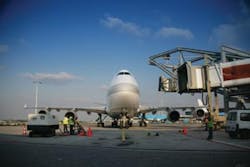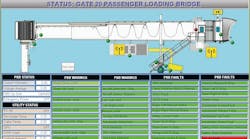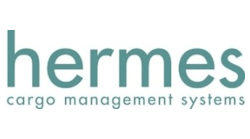In March, John Menzies plc announced its year-end financial results for 2009. Despite a tumultuous year for the industry, its aviation division, Menzies Aviation, posted a notable underlying operating profit of GBP15.8 million pounds (about US$24 million), an increase of 12 percent over 2008.
As a company that conducts ground and cargo handling operations in an industry that felt steep drops in demand worldwide, managing to increase profit was surely no small feat. It has made several moves to sustain its profit margin — including the termination of some profit-losing airline contracts, reducing its workforce by about 8 percent and instituting pay freezes, according to the financial report.
But not all has been about contraction. The company has continued to experience growth, especially through ground handling and cargo activities in the Americas region.
Cargo Handling
As for its cargo handling operations (25 percent of its global activity), the year-end report cited a decline of 17.8 percent in tonnage. Add on the declines in demand from previous years and the company has grappled with a 30-percent drop in cargo since 2007, notes Craig Smyth, president of Menzies Aviation.
The steep decline in volumes was compounded by a similar decline in yields which led to some contract churn, particularly at Heathrow.
“When the volume comes down, you can’t do very much about taking out 40 percent of your cost base, those fixed property costs,” Smyth says. “So the bigger the cargo warehouse, then the bigger the damage.”
Smyth says the company has four cargo warehouses of more than 120,000 square feet, which have experienced the largest losses. Having reduced capacity as much as possible and flexing employee hours, he says, the company now looks forward to a return in volume.
“I think some of the warehouses have got a better chance of getting back to profitability and making a decent return on investment,” he says. “Other warehouses in more challenging markets where there has been more predatory pricing, the yield has fallen in the market and that takes quite a bit of time for the yield to come back.”
He continues, “Because of the massive oversupply in cargo warehouses in the world, you’ve probably got twice the amount of supply chasing the demand, so cargo volume has really got to double globally before every cargo warehouse in the world is filled. So it’s going to take a bit of time for the yields to come back.
“And if we end up with a business that doesn’t look brilliant, that’s the time to start looking at structural solutions like forming joint ventures or swaps with other players in the market. It may be something that happens in one to two years time once the volume returns and everyone has assessed where the yields and volumes have gone,” he says.
Ground Handling
As challenging as the cargo sector has been, gains have continued to be made in its much larger ground handling operation.
While the company terminated some unprofitable airline contracts — a move that reduced the workforce by 300 employees, according to the report — eight new stations opened for ground handling operations, including Bristol, Stansted, Ibiza, Tenerife, Barcelona as well as Austin and Chicago.
Many of the company’s significant developments for ground handling operations came in the Americas region. In the US, its ground handling contract with Alaska Airlines at Seattle was renewed until December 2012, alongside 13 other ground handling contracts for the airline at separate locations across the US and Mexico.
In November, the company began handling ground operations for Virgin America at Fort Lauderdale International Airport, making it the fourth location that it serves for Virgin America since 2007.
And the US has presented opportunities for growth, even in cargo: Menzies was awarded three contracts at JFK with Aeroflot, Aerogal and Etihad Cargo.
The US has not been without its unique challenges, Los Angeles in particular, as the city increased the employee living wage by almost 30 percent in January 2010. That has translated to increased costs for Menzies to the tune of about $9 million annually. “We have to pass on that increase to our customers and our competitors have had to do the same thing,” says John Redmond, senior vice president of Americas at Menzies Aviation.
Technology
The company has turned to technology and new business models where it can to keep costs down. In the area of equipment, it has turned to a supplier for leasing and maintenance of its GSE fleets. “We started it five years ago and it’s grown,” Smyth says. “It works in the UK, and it works in most of our stations across Europe.”
And the company has brought the model to the US at its Houston location. It also has plans to incorporate it at LAX. “We’re expecting to outsource our equipment by the end of this year,” Redmond says, adding that the company will continue to expand the program to different locations in the region over the next few years.
The company has also incorporated new technology, including a new biometric recognition time attendance system as well as a new roster system. “Labor is 60 percent of our costs and we have got a time attendance and roster system, which has been rolled out in 2009 to about 60 percent of our activities and it will be up to about 90 percent of our activities by the end of 2010,” Smyth explains.
The company has also installed a suite of other IT systems. RSMS controls ramp activity and billing. Hermes controls all cargo activity. These systems are designed to improve efficiencies that translate into lower costs for customers, he says.
Future
Smyth says the company’s growth in the coming year will largely depend on how quickly recovery happens. In ground handling, he says he expects about 5-10 percent recovery in the near future. “It’s looking pretty good for cargo in the moment with volumes up near 20 percent so far but we are in the quiet time in the cargo season, first quarter, so we’ll see,” he says.
As for future growth in the US market, Smyth says it is an area of opportunity. “The US is probably about 25 percent of our revenue, which we’ll aim to sustain as we grow our overall network by 50 percent over the next three years. The US does have its unique challenges but it’s a fairly good place to do business,” he says.
Overall, Menzies Aviation has great ambition and an optimistic outlook for future revenue. “We expect to grow our top and bottom line by at least 15 percent each year over the next three years,” Smyth says.






